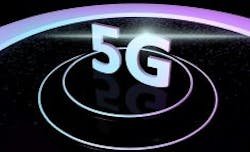Updates on Millimeter-wave 5G (Part 1)
Though the hype train of 5G may have some believing that true mm-Wave 5G will be showing up at your door any minute, the reality is that most 5G services will likely take years before they become viable. 3GPP Release 15 brought a new aspect to 5G beyond what many were expecting (other than the Telco’s that lobbied for it), which was additional sub-6 GHz frequency bands and a non-standalone mm-Wave protocol.
This has allowed wireless service providers to begin advertising 5G services that meet a much less impressive standard of performance that what has been oft communicated about the revolutionary benefits of 5G. Though impressive, Release 15, or 5G new radio (NR), appears more to be a continued upgrade of 4G LTE, with the exception that mm-Wave signals can also be used alongside the sub-6 GHz spectrum to create much higher bandwidth, and hence data rate, connections [1,2]. There are still substantial limitations in many metropolitan areas–which are argued to be the only viable regions for mm-Wave 5G other than large stadiums, arenas, and transit hubs.
There are several factors to this, many of which extend beyond the radio access network (RAN) to backhaul and core networking infrastructure. In many places and instances, the core network, and the architecture used to design it, aren’t capable of serving the key mm-Wave 5G features. These features include throughput up to 10 Gbps, latencies below 1 ms, the ability to service a variety of communication types including massive machine-to-machine communications, as well as much greater reliability and a last-mile internet connectivity service for homes and small offices dubbed, Fixed Wireless Access.
Where the core network isn’t a limitation, the backhaul network or RAN may be. To enable Gbps speeds and low latency, not to mention reliability, it has been argued that both the core and some backhaul networks will need to be “fiberized”, or be based on high-speed fiber-optic connections. The costs and complexities of fiber installations notwithstanding, there are also many areas where installing fiber isn’t viable. In these cases, it has been argued that a heterogeneous network architecture with several macrocells equipped with mm-Wave backhaul may be able to provide service to the myriad of mm-Wave small cells that will be needed to effectively cover a metropolitan region [3]. There is also ongoing thought that the core networks, backhaul, and RAN should be designed as a whole system, instead of separate, but interconnected parts. As future 5G services may dominate the volume of traffic as well as with sheer number of users for future metro areas, this may be a feasible suggestion. However, there are many cities that have already heavily invested in core and backhaul resources that may wait some time before upgrading their existing infrastructure.
References
https://www.itu.int/dms_pub/itu-r/opb/rep/R-REP-M.2410-2017-PDF-E.pdf
https://www.gsma.com/spectrum/wp-content/uploads/2018/11/5G-Spectrum-Positions.pdf
http://arxiv.org/pdf/1902.06300.pdf
